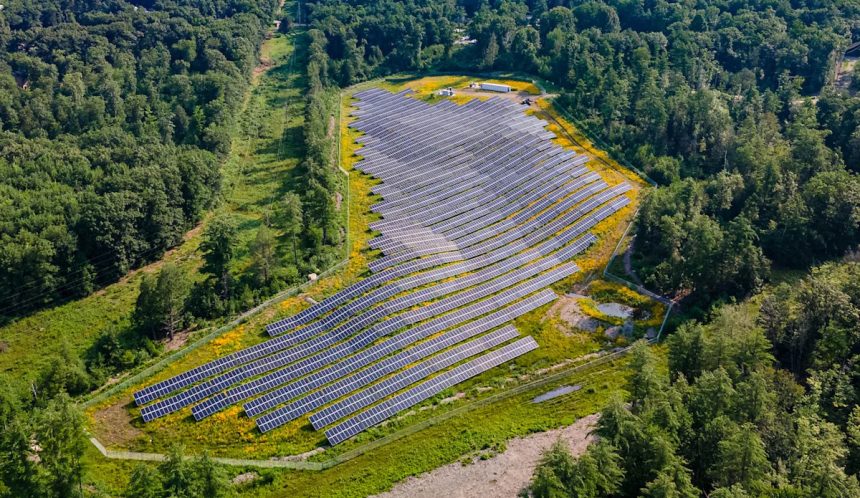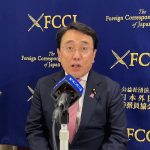Community solar has thrived in Illinois, thanks to clean-energy laws passed by state legislators in 2016 and 2021. Now, though, one major utility’s especially slow process for reviewing applications could jeopardize further progress. Developers stuck in the interconnection queue may not be able to access key federal tax credits that were sent to an early grave by the GOP’s One Big Beautiful Bill Act.
The beauty of community solar is that it allows anyone, even those who can’t put photovoltaic panels on their own properties, to access solar energy via subscriptions to a larger array sited elsewhere. Until congressional Republicans passed their budget law this summer, the companies building community solar could tap federal tax credits into the 2030s; now, projects must begin construction by July 2026 or be placed in service by the end of 2027 to qualify.
Before any power-generating project can connect to the grid, it needs to undergo a lengthy review. Utilities must determine the project’s viability and the cost of grid upgrades that it might require, which the developer usually pays for and needs to know ahead of time to secure financing. Though the process is notorious for taking too long, the actual length of time a proposal spends in this interconnection queue can vary greatly depending on the utility.
Advocates are calling out Ameren, which serves central and southern Illinois, for taking longer than the norm. One major reason is that the utility only studies community solar applications one at a time. At that rate, it takes years or even decades for proposals to be reviewed and ready for construction.
By contrast, ComEd, the utility that serves northern Illinois, reviews multiple project proposals concurrently and “typically performs hundreds of studies every month,” according to the ComEd team that specializes in interconnection and distributed energy resources.
Ameren currently has over 1,700 projects pending review in its interconnection queue, the vast majority of which are community solar, according to Ameren spokesperson Marcelyn Love.
The utility is moving toward studying proposals concurrently, like ComEd does, but the policy won’t be fully in place until January 2027, said Love. That’s too late for projects depending on the federal tax credit to make their finances work.
“I think we’ll see a lot of projects that can’t meet these deadlines and just fall off,” said Jessica Collingsworth, central policy director for Nexamp, a community solar developer with headquarters in Chicago and Boston. “Every developer is trying to start construction on as much as possible.”
How can utilities speed up the interconnection queue?
Illinois currently ranks among the top five states for community solar capacity. Illinois lawmakers kick-started this development in 2016, when they created a state program now called Illinois Shines to incentivize development of the shared arrays.
About 768 megawatts of community solar are already operating statewide, according to a report by consultancy Wood Mackenzie and the Solar Energy Industries Association, a trade group. But far more proposals are pending, meaning Ameren and ComEd have needed to quickly figure out how to add increasing amounts of community solar to their grids.
ComEd now has about 200 community solar projects totaling more than 430 MW of generation in its territory, according to utility spokesperson David O’Dowd. In 2025 so far, the utility has received 442 requests for new community solar projects. It is dealing with about 750 pending applications in all, including around 80 that have interconnection agreements but are awaiting a customer signature, O’Dowd said.
Even with the glut of applications, ComEd said it has managed to complete interconnection studies and agreements in a timely fashion, in part because it studies projects concurrently.
Developers agree with that assessment. Nexamp, for example, “has experience in over a dozen markets and finds concurrent studies to be the fastest way to get local solar to the grid,” Collingsworth said. The firm has 31 community solar projects operating in ComEd territory and a number of proposals pending in Ameren territory.
“We need certainty around interconnection costs before we can feel confident beginning construction on projects,” said Collingsworth. “Anything that delays getting that certainty is a problem we need to solve quickly.”
Love said that Ameren is increasing its “internal and contractor resources” to be able to do multiple studies at the same time — in other words, the utility is bringing on more experts to review proposals.
“These improvements have already helped us advance 20 applications that were second in line, allowing us to both test out the concurrent study process and get more applicants information about their projects,” she said.
But the utility must balance the benefits of hiring more people to do the studies with the costs for those hires, which customers will ultimately pay for in their bills, she added.
Ameren is also working to address other reasons for interconnection delays.
For example, sometimes the utility spends a lot of time reviewing a project, only to ultimately decide it cannot be approved at all. To avoid this unnecessary use of resources, Love said Ameren is “studying the limits of what different circuits and substations on the grid can handle, to be able to more quickly predict when an application for connecting community solar in that area will be denied because the grid has reached its maximum capacity.”
The utility is “redesigning our approach to identify projects that have a high propensity for approval,” Love added, so that agreements can be signed more quickly, leaving detailed cost analyses until later in the process.
This means that Ameren “can get more projects through the pipeline and avoid spending time and resources on applications that are unlikely to move forward, due to high costs or other factors,” Love said.
Collingsworth said that more information and transparency from the utility make developers’ jobs easier, since they know which proposals to prioritize.
Love said Ameren has made maps and queue reports more user-friendly, so that developers will have a better idea of which projects are worth pursuing. The utility is also offering companies “a one-time opportunity to reduce the size of their project to help manage anticipated interconnection costs,” Love said, meaning that developers can change their proposal without having to resubmit it and lose their place in line.
While delays have not been a major problem in ComEd territory, according to developers, the utility has also taken steps to reduce interconnection wait times. It is allowing the use of a letter of credit or escrow account instead of cash as the deposit needed before construction can begin, and it is connecting developers seeking to do projects on the same part of the grid, so they can potentially collaborate to reduce costs.
State lawmakers look to ease interconnection
A clean-energy bill that state legislators may consider during an October veto session aims to hasten the interconnection process across Illinois. The legislation would create a working group composed of utilities, developers, and other stakeholders that would report to the Illinois Commerce Commission, the body that regulates energy.
The state’s 2021 clean-energy law called for an interconnection working group, but “it hasn’t been a very productive space,” Collingsworth said. The newly proposed committee would be required to study and report to the Commerce Commission on certain issues, including interconnection timelines, cost-sharing between developers, and ways to create more transparency around the process. The Commerce Commission could then codify such concepts as binding rules and policies.
While the bill’s passage likely wouldn’t help projects meet the July 2026 construction-start deadline for federal tax credits, Collingsworth said it is important for the future of community solar in Illinois. Along with establishing the interconnection committee, the legislation would create a virtual power plant program, providing extra revenue to battery-equipped community solar projects that send power to the grid at times of peak demand.
Professionals in the solar industry said that the impending loss of federal tax credits underscores the importance of such state-level programs and policies.
“The tax credit is a key economic driver in Illinois, and without it, there is a much larger need for the incentives in the Illinois Shines program to fill the gaps,” said Nick Theisen, director of business development for TurningPoint Energy, which has more than 40 community solar projects built or in the works in Illinois, all in ComEd territory.
Andrew Linhares, who leads Midwest policy work for the Solar Energy Industries Association, echoed Theisen’s sentiment. “The bottom line is that state-level leadership on clean energy is more important than ever as federal policies and red tape are raising energy prices and making it harder to meet rising energy demand.”









